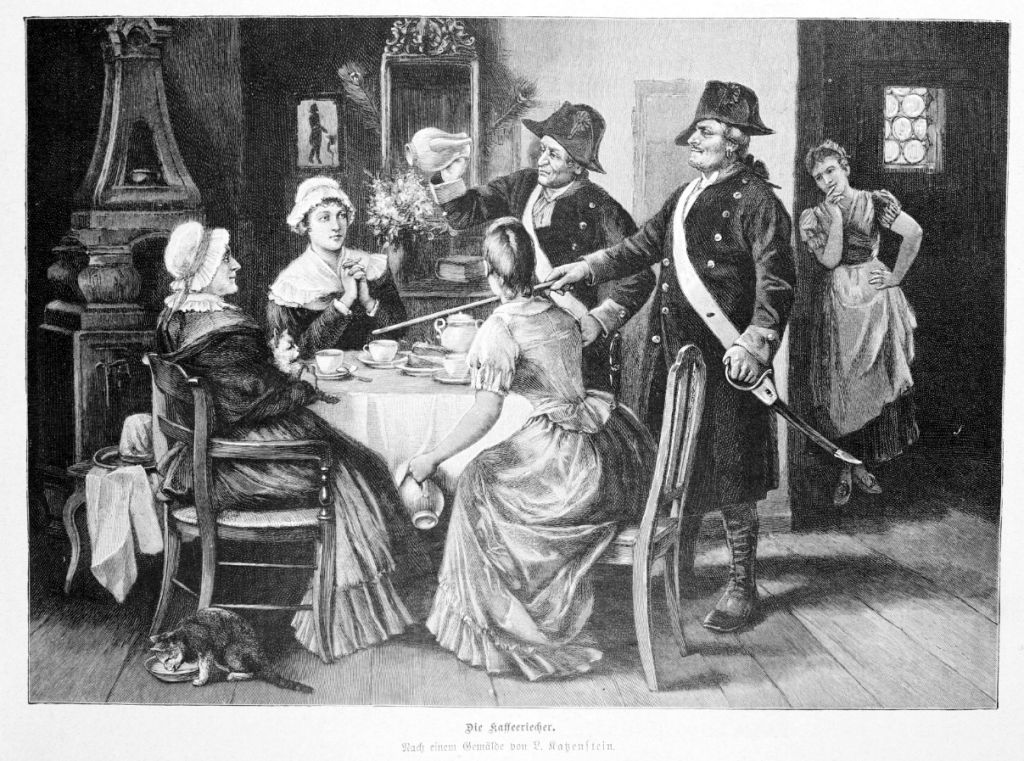In the 17th century, some of today’s most beloved drinks — coffee, tea, and chocolate — were once viewed with deep suspicion. When these “divine beverages” first arrived in Europe, civil and religious authorities saw them as exotic, even subversive. Their foreign origins and stimulating effects made them objects of fascination, controversy, and at times, prohibition.
Coffee traces its roots to the highlands of Ethiopia, where the Coffea arabica plant produces the precious beans that, once roasted and brewed, yield the dark, fragrant drink we know today. From Ethiopia, coffee spread to Yemen and across the Islamic world before reaching Europe. In 1672, an Armenian merchant named Pascal introduced the first coffee to Paris, setting up a small stand near the Saint-Germain fair — an event that marked the beginning of France’s enduring love affair with the drink.
Chocolate has an equally captivating story. It comes from the seeds of the Theobroma cacao tree, native to Central and South America. The Maya and Aztec peoples prepared it as a sacred, bitter beverage, often mixed with spices and chili — a divine elixir meant to awaken both body and spirit.
These exotic drinks, however, sparked strong reactions. Coffeehouses became lively meeting places where new ideas brewed alongside cups of steaming coffee — much to the concern of kings and clergy. Chocolate, too, stirred debate within the Church: some saw it as sinful indulgence, others as a heavenly pleasure.
Even in the Age of Enlightenment, the story continued to brew with conflict. In 1777, Frederick the Great of Prussia tried to ban coffee altogether. He feared it would replace beer — the national drink and a source of tax revenue — and even claimed that beer made his soldiers strong, while coffee made them weak. To enforce his will, he appointed “coffee sniffers” (see picture) to hunt down those secretly roasting beans.
Despite resistance and regulation, these once-suspect beverages soon became powerful symbols of refinement, curiosity, and creative thought. Today, coffee, tea, and chocolate remain faithful companions of conversation, reflection, and imagination.

A Personal Reflection: Forbidden Pleasures and Creative Sparks
This history of suspicion and fascination mirrors the journey of modern art. Like coffee, tea, and chocolate, art has often been feared, censored, or condemned. Impressionists were mocked for daring brushstrokes; avant-garde movements were branded degenerate under totalitarian regimes. But prohibition, ridicule, or misunderstanding never extinguished their appeal — instead, it made them irresistible.
I see in these stories a reflection of human curiosity itself: the desire to taste, to see, to explore what lies beyond the accepted, the safe, the ordinary.
